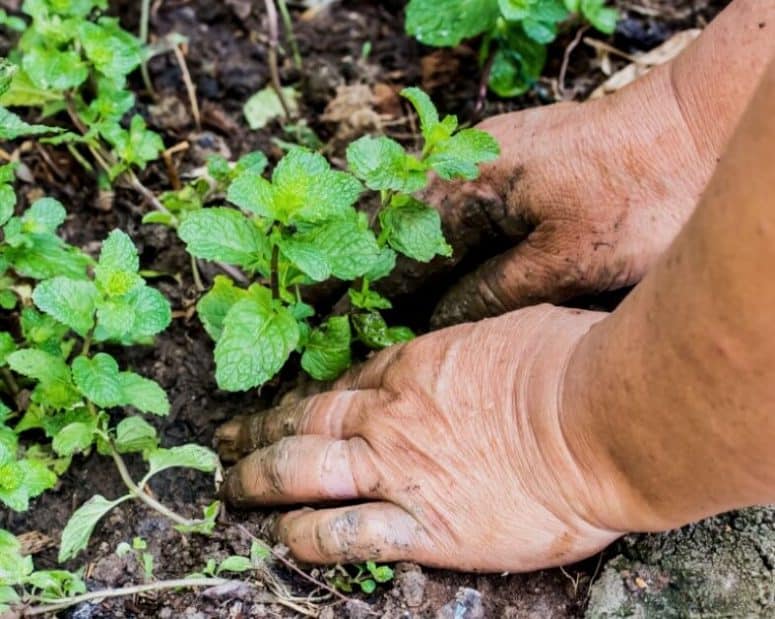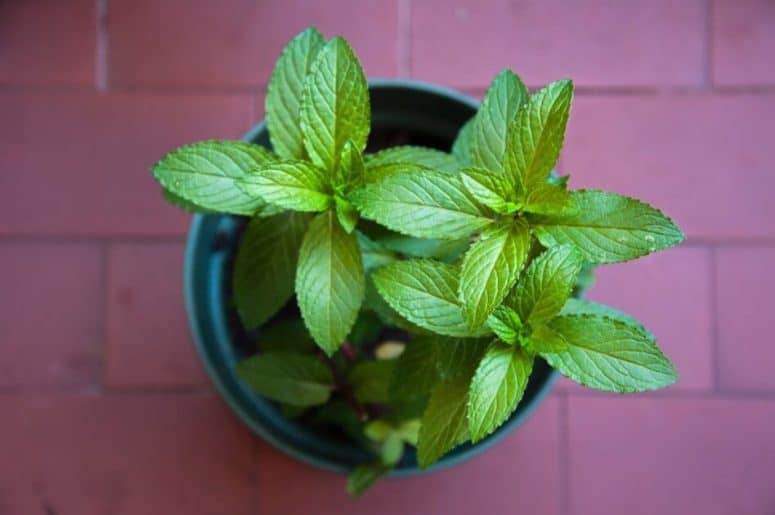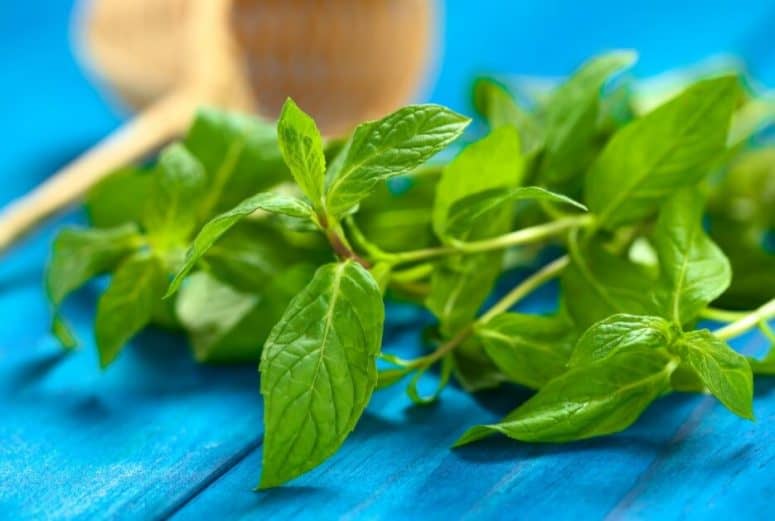In this article, we will explore one of the most beloved herbs: mint. Mint is a herbaceous plant that is widely recognized for its distinct aroma and taste. The refreshing sensation it provides in our mouths and the soothing effect it has on our stomachs are characteristic features of mint.
Mint belongs to the herbs family and encompasses various species and varieties. Among the commonly used mint varieties are Peppermint, Spearmint, and Curly mint.
While both spearmint and curly mint are frequently utilized for culinary purposes, there are other types of mint that also hold significance. Peppermint, apple mint, orange mint, and chocolate mint, for example, are additional varieties that are often employed for their unique flavors.
Benefits of Mint
Mint is a versatile herb that pairs wonderfully with a wide range of foods and beverages, whether they are savory or sweet. For instance, mint enhances the rich flavors of lamb and poultry, and it can also be used as a sauce in various dishes.
When it comes to drinks, mint is a versatile addition that can complement almost any beverage. The cooling and refreshing sensation of peppermint, in particular, is commonly found in drinks and even ice cream flavors.
Aside from its culinary uses, mint offers numerous health benefits. It is known for its calming properties and can help manage gastrointestinal issues. The antioxidants and anti-inflammatory compounds present in mint are also valuable in alleviating allergy and cold symptoms. Mint provides a soothing effect.
Moreover, mint is a good source of vitamins and minerals while being low in calories. Therefore, incorporating mint into salads or sauced dishes is recommended for those following a diet. However, it’s important to avoid overconsumption, as excessive amounts of anything can have negative effects.
Are you ready to explore the culinary possibilities and enhance your dishes with this famous and beneficial herb?
Growing mint in your home is a rewarding gardening activity that offers both financial savings and culinary benefits. Even for beginners with little gardening experience, cultivating mint is relatively easy. Here, you will find the ultimate guide on how to successfully grow mint at home.
How to Grow Mint

Indoor or Outdoor?

The great news is that you can cultivate mint indoors, even though it has a rapid growth rate. Growing mint indoors necessitates a bright and sunny location.
While mint can tolerate partial shade outdoors in the garden, planting it indoors is more effective when there is ample light, as windows can partially block the quality of sunlight.
Additionally, you have the option to grow mint in water or hydroponically. However, planting mint in water requires specialized knowledge; otherwise, your mint may not survive and could turn yellow and eventually die. If you opt for hydroponics, you can explore growing mint using hydroponic tools alongside other hydroponic plants.
On the other hand, planting mint outdoors requires providing sufficient spacing between mint plants and other vegetation. It is crucial to give mint its own personal space because once it establishes a robust growth and you begin harvesting, it will rapidly spread and grow bushy in all directions. The advantage of this is that you’ll have an abundant supply of mint leaves for future use with minimal effort.
Soil
For optimal growth, it is highly recommended to cultivate mint in soil that is rich and moist. Additionally, maintaining a slightly acidic pH level, ranging between 6.5 and 7.0, can significantly promote the growth of mint.
When preparing your garden for mint, it’s important to allocate a sufficient amount of quality soil, approximately 24 inches deep. This is because mint has a tendency to be highly invasive, spreading vigorously if given the opportunity. Providing ample space and containing the growth of mint within designated areas can help prevent it from taking over your garden.
Light
Mint thrives in partial shade when grown outdoors, although it can tolerate full sun as well. If you choose to grow mint in full sun, it’s important to be diligent about watering it regularly. The advantage of growing mint in full sun is that you don’t have to worry about shade obstructing sunlight.
On the other hand, if you plan to cultivate mint indoors, it still requires a sunny location. Direct sunlight and indoor lighting have varying effects on mint plants, so providing a bright and sunny spot indoors is essential for their growth and development.
Water
Mint thrives in soil that is consistently moist and well-drained. Similar to other herbs, it is important to avoid overwatering mint, as waterlogged conditions can be detrimental to its growth. It is best to water your mint plants regularly, especially when the soil feels dry to the touch.
The optimal time to water mint is in the morning. This allows the plants to absorb the moisture they need and ensures they have enough water throughout the day, particularly during the sunniest and warmest parts of the afternoon. By watering in the morning, you help to keep your mint adequately hydrated as the temperature rises.
Temperature
Mints are well-known for their refreshing and calming sensation when consumed. In addition to their sensory qualities, mints are capable of tolerating colder temperatures.
When it comes to planting mints indoors, it is important to maintain sufficient humidity in the room. You can achieve the desired humidity level by utilizing a humidifier, misting the plant between watering sessions, or placing the mint container on a tray filled with water and pebbles. These methods help to create a humid environment that promotes healthy growth for your mint plant.
Fertilizer
If desired, you can fertilize mint every six weeks using liquid fertilizer or incorporating aged compost into the soil. However, it is worth noting that some individuals find fertilizing mint to be a risky endeavor, as there is a concern that it may compromise the delicate fragrance of the mint.
Harvesting

Due to its rapid growth, mint can be harvested once the stem reaches a height of 6 to 8 inches. If you are growing mint from seeds, it is recommended to wait approximately two months before harvesting.
It is important not to harvest more than one-third of the mint plant at a time. Over-harvesting can weaken the plant and hinder its growth, rather than stimulating further growth.
Regularly trimming the mint leaves is essential to encourage new, bushier growth. Trimming the stems every couple of weeks, particularly from the back, helps maintain the plant’s shape and provides fresh mint leaves that can be utilized in the kitchen as needed.
Troubleshooting the Pest
Mint, with its lush green leaves and delightful aroma, is susceptible to various pests such as spider mites, whiteflies, blackflies, snails, and slugs. In certain instances, you may even notice orange spots beneath the leaves.
To address these issues, you can employ organic fungicides as part of your pest control measures. Applying the fungicide between watering sessions not only helps eliminate mildew but also aids in combating these insects, safeguarding the health and vitality of your mint plants.
Conclusion
Mint is a remarkably versatile herb that can be easily grown at home, making it an excellent choice for beginners. Whether you choose to start from seeds or cuttings, planting mint is a straightforward process.
When caring for mint, it is essential to water the soil regularly, particularly in the morning. This ensures that the soil remains adequately moist when the sun is at its strongest in the afternoon. Avoid overwatering mint, as excessive moisture can impede its growth and lead to plant decline.
Mint thrives in partial shade and can tolerate such conditions. However, if you decide to grow mint indoors, be sure to place it in a sunny spot to provide sufficient light for optimal growth.
Due to its fast growth and invasive nature, it is crucial to allocate ample space in your container or garden for mint. Regular trimming is necessary to encourage new growth and maintain the plant’s shape, keeping it in check.
By following these guidelines, you can enjoy a thriving mint plant that adds flavor and fragrance to your culinary endeavors.